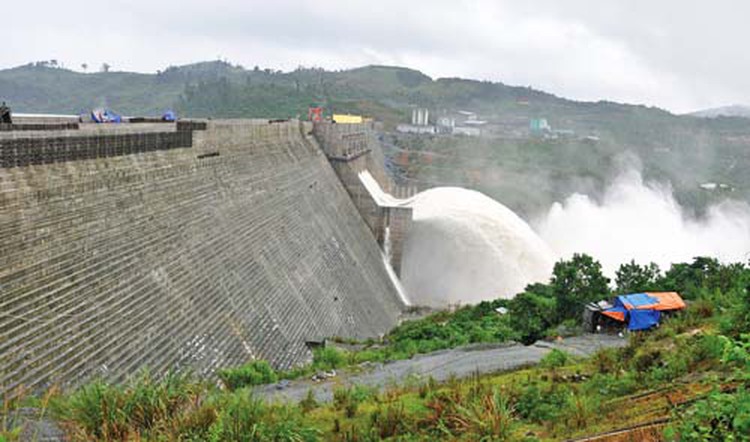
Almost 20,000 hectares of natural forests in Vietnam, equivalent to 25 times the area of District 1 in Ho Chi Minh City, were scraped away between 2006 and 2012 to make space for 160 hydropower projects.
Part 1: Afforestation in return for hydropower plants ignored
Part 2: Loopholes in law abet hydropower deforestation
In theory, this amount of space must be afforested in conforming to governmental regulations, but in reality only 735 hectares of forests have been replanted, meaning 1/27 of the forests lost.
Is it a violation of the investors, who actually lean on other laws and regulations to evade responsibility?
Gaps in law
Ordinance 23, issued in 2006 by the government, states that investors of hydropower projects who are authorized to scrape away forests for the plants’ construction have an obligation to afforest a similar amount of the forested area in another location.
Based on the rule, Pham Ba Han, deputy chief of the management board of hydropower plants Buon Kuop, Buon Tua Srah, and Serepok 3 in the Central Highlands province of Dak Lak, argued that those three plants were built before 2006 and so he bears no duty of afforestation.
An abundance of other investors have used this same reasoning to evade responsibility.
Another reason cited by investors is that they have not been assigned a sufficient area for replanting forests.
Dang Van Tuan, CEO and general director of the Song Ba Ha Hydropower Joint Stock Company in central Phu Yen Province, admitted that his agency has been dragging in forest replanting. But he then blamed local authorities for their failure in granting him substitute land for afforestation.
According to the approved plan, the company had to afforest 25 hectares in 2012 but was only assigned 13 hectares.
Similarly, hydropower plant Krong H’Nang in Dak Lak is required to return 180 hectares of forests, but only five hectares have been replanted.
“We worked with the Ea So Sanctuary to ask for land for replanting the 175 remaining hectares but we were offered an expensive price,” said Tra Quang Huu, manager of the project.
The shortage of land for replanting forests shows that there are gaps in environmental assessment before the construction of any hydropower project, said Nguyen Thai Hoc, deputy chief of the Phu Yen Province delegation to the National Assembly.
The projects’ investors promised in general that they will afforest areas in return for the lost areas but they actually have no plan to do it.
Authorities should have clarified substitute areas of afforestation before giving approval. In reality, they did not check, he added. It is unbelievable that a hydropower plant has been in operation for years but has failed to return forests as ruled by the government.
Nguyen Ba Thuyen, deputy chief of the Lam Dong Province delegation to the National Assembly, blamed the responsibilities on local authorities.
They should have kept close watch on afforestation in the locality they manage, he said.
“No one replants trees to return forests,” he argued.
Do Tai, chairman of the People’s Committee of Dong Giang District in Quang Nam Province, refuted the cited shortage of land for afforestation.
“Land is still immense. The reason is investors have found a way to evade their responsibilities,” he concluded.
Deputy Minister of Agriculture and Rural Development Ha Cong Tuan insisted that the government will address regulations to tackle the trouble this month.
“A hydropower project must have a feasible plan for afforestation before getting approval for construction. Otherwise, the investor is obligated to pay fees into the central fund for forest preservation and development,” he added.


Max: 1500 characters
There are no comments yet. Be the first to comment.